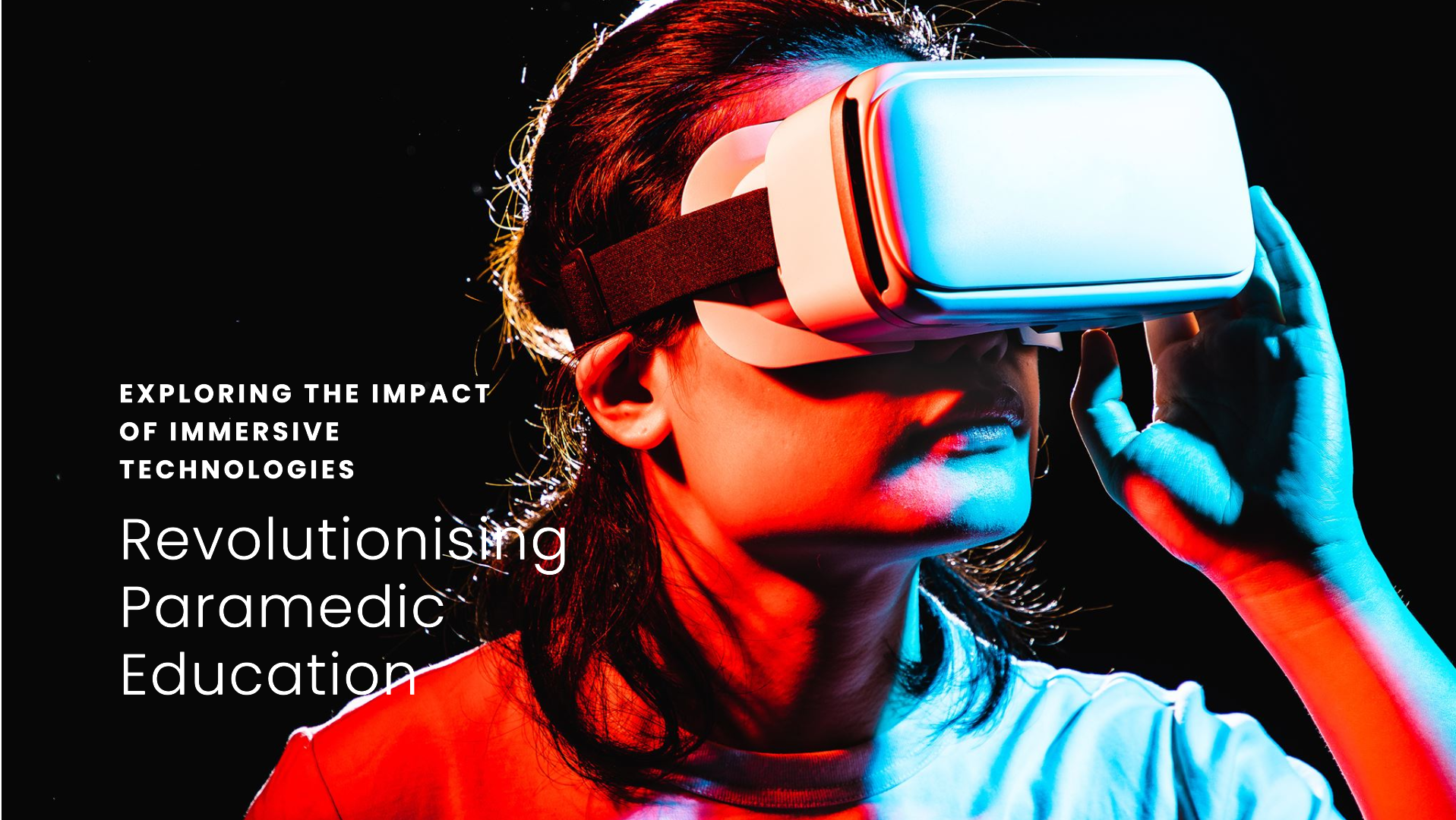
In a field like paramedicine, where split-second decisions can be the difference between life and death, education must go beyond theory. Immersive technologies, such as Virtual Reality (VR), Augmented Reality (AR), and simulation, are transforming paramedic training, offering a dynamic, risk-free way for students to hone their skills in realistic, high-pressure environments. This revolution in education allows future paramedics to gain vital hands-on experience without compromising patient safety.
Bridging the Gap Between Theory and Practice
Paramedic students often face a steep learning curve when transitioning from the classroom to the field. While textbooks can offer knowledge, they can’t replicate the intensity of real-life emergencies. This is where immersive technologies come in.
With VR and AR, students can interact with lifelike environments that mimic high-stress situations, such as responding to a multi-vehicle collision or managing a cardiac arrest. These technologies provide an immersive, 360-degree experience, allowing students to practice essential skills such as patient assessment, triage, and airway management in an environment that feels real.
The Role of Simulation in Safe, Realistic Practice
Simulation, often using high-fidelity mannequins and digital scenarios, is another cornerstone of immersive paramedic education. These simulations enable students to perform complex interventions, such as intubation or chest decompression, while receiving real-time feedback on their actions. Instructors can also adjust scenarios on the fly, adding variables like changing patient conditions or environmental hazards to challenge students further.
This approach not only reinforces practical skills but also builds confidence. It helps students become more comfortable with clinical decision-making under pressure—a crucial aspect of paramedic work.
Reducing Risk, Enhancing Learning
In traditional training environments, there is always the concern of making mistakes on real patients. While learning from errors is essential, the stakes are too high in healthcare for certain mistakes to occur. Immersive technologies eliminate this risk by creating controlled environments where students can make and learn from their errors without harming patients.
In VR or simulation labs, paramedic students can repeat procedures multiple times, refining their skills with each attempt. They can also experience a wide variety of medical emergencies that might not arise frequently during their clinical placements, ensuring they are well-prepared for any situation once they graduate.
Building Soft Skills: Communication and Teamwork
Immersive technologies don’t just enhance clinical skills—they also build soft skills. In paramedicine, effective communication and teamwork are just as important as medical expertise. With simulation and VR, students can practice working as part of a team, coordinating with colleagues, and communicating clearly with patients in stressful scenarios.
For example, a VR simulation of a mass casualty incident might involve a team of students managing different patients simultaneously. This fosters a collaborative mindset and teaches students how to delegate tasks, prioritise care, and stay calm under pressure—all crucial elements of effective paramedic work.
A Future-Focused Approach to Learning
As technology continues to advance, the potential for immersive learning in paramedic education will only grow. Innovations such as haptic feedback (which simulates the sense of touch) and AI-driven patient avatars are already being explored, promising even more realistic training scenarios.
Moreover, immersive technologies make education more accessible. Students in remote areas or those unable to attend in-person training sessions can still gain vital hands-on experience through VR simulations, democratising paramedic education on a global scale.
Immersive technologies are revolutionising paramedic education by bridging the gap between theory and practice, allowing students to gain critical experience in a safe, controlled environment. Through VR, AR, and simulation, paramedic students can develop the technical, communication, and teamwork skills needed to excel in real-world emergencies—without ever putting patients at risk.
As these technologies continue to evolve, they will undoubtedly shape the future of paramedic education, creating a new generation of highly skilled, confident, and compassionate healthcare professionals ready to face the challenges of the field.
Actionable Insight
If you’re an educator or paramedic student, explore ways to integrate immersive technologies into your training. Whether it’s VR for scenario-based learning or high-fidelity simulation labs, these tools can dramatically enhance both teaching and learning, preparing students for the demands of a fast-paced, high-pressure career.
Leave a Reply